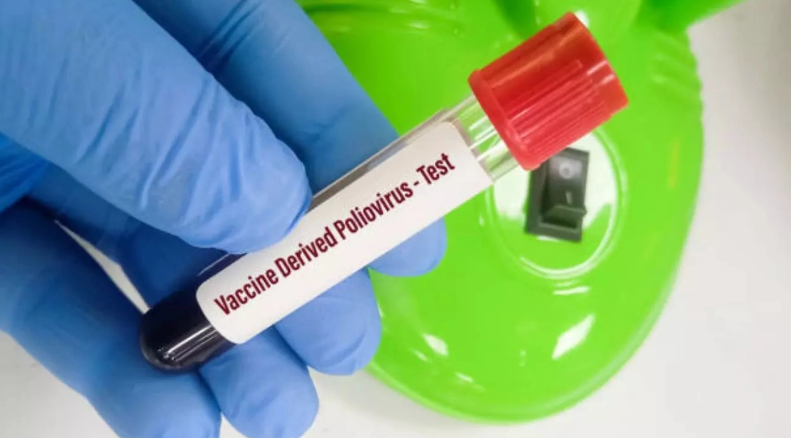Intriguing Silence (GS Paper 2, Health)

Context and Background
- On August 14, 2024, a case of acute flaccid paralysis (AFP) in a child from Tikrikilla in Meghalaya was reported, sparking concern about polio.
- This case has intensified discussions around India’s polio vaccination strategy, particularly the continued use of the oral polio vaccine (OPV) versus transitioning to the inactivated polio vaccine (IPV).
Historical Context of Polio Cases
Kolkata Case (April 2022):
- In April 2022, Kolkata detected a vaccine-derived poliovirus (VDPV) from an environmental sample.
- Genetic analysis suggested it was an immunodeficiency-related VDPV (iVDPV), which typically occurs when an immune-deficient person excretes the virus after vaccination.
Meghalaya Case Incident:
- The current situation in Meghalaya remains unclear as no official determination has been made regarding the type of poliovirus involved.
- Without definitive identification, the risk and source of the virus cannot be accurately assessed.
Global Polio Situation:
- Eradication of Wild Polioviruses: The global eradication of wild poliovirus (WPV) type 2 in 2015 and type 3 in 2019 marked significant milestones. For years, WPV type 1 has not been detected in environmental samples in India, making it less likely that the Meghalaya case is due to WPV type 1 unless imported.
- Ongoing WPV Cases: Afghanistan and Pakistan have reported 14 WPV type 1 cases in 2024, highlighting that while WPV remains a threat in some regions, it is less likely to be the source of the current problem in India.
- Circulating VDPV (cVDPV) Cases: Globally, 68 cases of cVDPV type 2 and four cases of cVDPV type 1 were recorded in 2024, with many countries detecting cVDPV in environmental samples.
Concerns Regarding Confirmation of Polio Cases
Distinguishing VDPV Types:
- iVDPV vs. cVDPV: iVDPV is limited to individuals with specific health conditions, while cVDPV indicates the virus is circulating within the community. Accurate classification is essential for determining the appropriate public health response.
Community vs. Individual Cases:
- Virus Circulation: Identifying whether the virus is widespread (cVDPV) or confined to an individual (iVDPV) is critical for effective intervention and vaccination strategies.
Virus Type and Risk:
- Type 2 Virus: India switched to bivalent OPV in 2016, which only contains live attenuated types 1 and 3. Thus, the likelihood of type 2 virus from OPV being a factor in India is minimal. However, cVDPV type 2 from external sources remains a possibility.
- International Cases: Global cases of cVDPV highlight the persistent risk of vaccine-derived viruses, which can affect even regions with strong vaccination programs.
Challenges with Current Polio Vaccination Strategy
IPV vs. OPV:
- Immunodeficient Children: OPV is not recommended for immune-deficient children due to the risk of vaccine-derived poliovirus. Identifying such children before vaccination is challenging, making the case for IPV, which does not carry this risk.
- Global Practices: Developed countries transitioned to IPV decades ago to avoid the complications associated with OPV, including the risk of vaccine-derived polioviruses.
Need for Expedited Virus Profiling:
- Confirmation Delay: The delay in confirming the specific virus type and source from the Meghalaya case is concerning. Samples have been sent to ICMR-NIV Mumbai, a WHO-accredited lab, for analysis. Speeding up this process is crucial for an effective response.
Way Forward
Immediate Actions:
- Switch to IPV: Given the complexities and risks associated with OPV, India should prioritize a transition to IPV. IPV does not carry the risk of vaccine-derived polioviruses and is a safer option for preventing polio.
- Strengthen Surveillance: Enhanced surveillance and quicker diagnostic capabilities are necessary to promptly identify and respond to polio cases.
Global Standards and Coordination:
- Adoption of IPV: Aligning with global practices by adopting IPV will help India manage and eventually eradicate polio more effectively.
- International Collaboration: Continued collaboration with global health organizations will support the transition and ensure that vaccination strategies are aligned with international standards.
Conclusion
- The case of acute flaccid paralysis in Meghalaya highlights the urgent need for India to reevaluate its polio vaccination strategy.
- The complexities associated with OPV, especially in the context of immunodeficient children and global polio dynamics, make a compelling case for transitioning to IPV.
- By adopting IPV, India can mitigate the risks associated with vaccine-derived polioviruses and align with global practices to ensure a safer and more effective approach to polio eradication.


